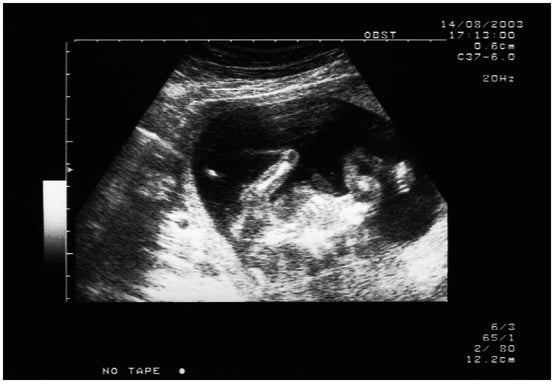Nature recently published an article written by Armand Marie Leroi that opens with this interesting question:
“Now that many people approve the elimination of certain genetically defective fetuses, is society closer to screening all fetuses for all known mutations?”
The article offers interesting statistics on the current state of genetically defective fetuses in the USA and how often these fetuses are aborted. The statistics clearly show that termination of the pregnancy of a genetically defective fetus is a widespread and growing phenomenon.
Although the abortion of a genetically defective fetus is quite controversial in the USA, Leroi points out that in many other countries it is morally acceptable, with 80% or more of such fetuses aborted in France and Taiwan compared to roughly 30% in the USA.
The moral and religious facets of aborting a genetically defective fetus are intentionally avoided in this article. Leroi’s intention is neither to promote nor discredit the abortion of genetically defective fetuses, but simply to report on the science and statistical trends that are taking place.
A significant impediment to a universal, total prenatal screen for all known mutations is the invasive and expensive nature of the procedure. Should the procedure become less invasive and less costly I suspect abortions of genetically defective fetuses would skyrocket, quickly overpowering most of society’s moral issues with the matter.
Below are interesting quotes from the article:
“Every year, 4.1 million babies are born in the USA. On the basis of the well-known risk of Down syndrome, about 6,150 of these babies would be expected to suffer from this genetic condition, which is caused by an extra copy of chromosome 21. In reality, only about 4,370 babies are born with Down syndrome; the there have been aborted during pregnancy…Data from other regions are similar or even higher: 32% of Down syndrome fetuses were aborted in Western Australia (Bourke et al, 2005); 75% in South Australia (Cheffins et al, 2000); 80% in Taiwan (Jou et al, 2005); and 85% in Paris, France (Khoshnood et al, 2004). Despite this trend, the total number of babies born with Down syndrome is not declining in most industrialized nations because both the number of older mothers and the conception rate is increasing.”
“This high number of so-called medical abortions shows that many people … consider the elimination of a genetically defective fetus to be morally acceptable”
“…there is no technical obstacle to constructing an oligo-based micoarray able to detect all known disease-causing mutations”
“In Taiwan, screens for thalassaemia mutations have caused the live-birth prevalence of this disease to drop from 5.6 to 1.21 per 100,000 births over eight years (Chern et al, 2006).”




